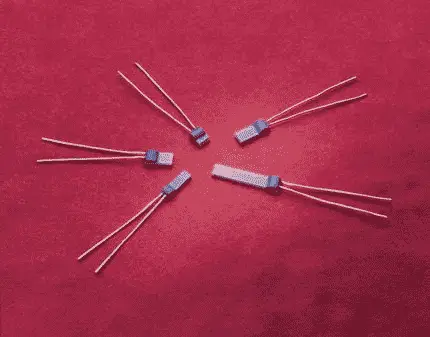A thin film RTD has a small platinum film on a ceramic substrate. Platinum is the most widely used element for the resistance temperature detector(RTD). The main feature of the thin film RTD is that it has a very linear resistance Vs temperature relationship. The excellent linearity in the change in the resistance with temperate thin-film RTD makes it a good choice for precision temperature measurement.

The thin-film RTD can reliably function in the range from -200°C up to +850°C. The thin-film RTD is available as a leaded device and surface mount device. Further, It can also be constructed for working temperatures above 850°C. It is also available in the resistance value 100Ω, 500Ω, and 1,000Ω.
Advantages of Thin Film RTD
The followings are the advantages of thin-film RTD.
- It needs a very less material for its construction. Therefore, it is cost-effective.
- The small size of the thin film RTD makes it a perfect choice as a temperature sensor for most instrumentation and industrial control applications.
- It is easy to get increased resistance with the reduced size of thin-film RTD. Therefore, it is possible to get the RTD in different resistance, such as 100Ω, 500Ω, and 1,000Ω.
- The sensitivity of the sensor also increases because of an increase in nominal resistance.
- The leads of the thin film RTD are suitable for connecting to the instruments through soldering, crimping, brazing, and welding. Thus, it is easy to interface RTD to the instrument.
- The thin-film RTD is available in different resistance ranges. Therefore, it is possible to have a wide range of temperature measurements.
- It has a wide temperature range of measurement.
- The repeatability of the thin film RTD is excellent, and it provides accurate temperature measurement without drift.
- Thin-film RTD is very robust and does not affect by vibration. Thus, a thin film RTD is the best choice for a vibration environment.
- The response time of the thin film RTD is excellent, and its resistance changes very quickly with changes in temperature.
- It is cheaper than the wire wound RTD.
Looking to the above good features of thin-film RTD, it is the best temperature sensor that fits for almost all temperature measurement applications. The thin-film RTD has wide applications in automobiles, medical thermometers, and, process plant instrumentation.